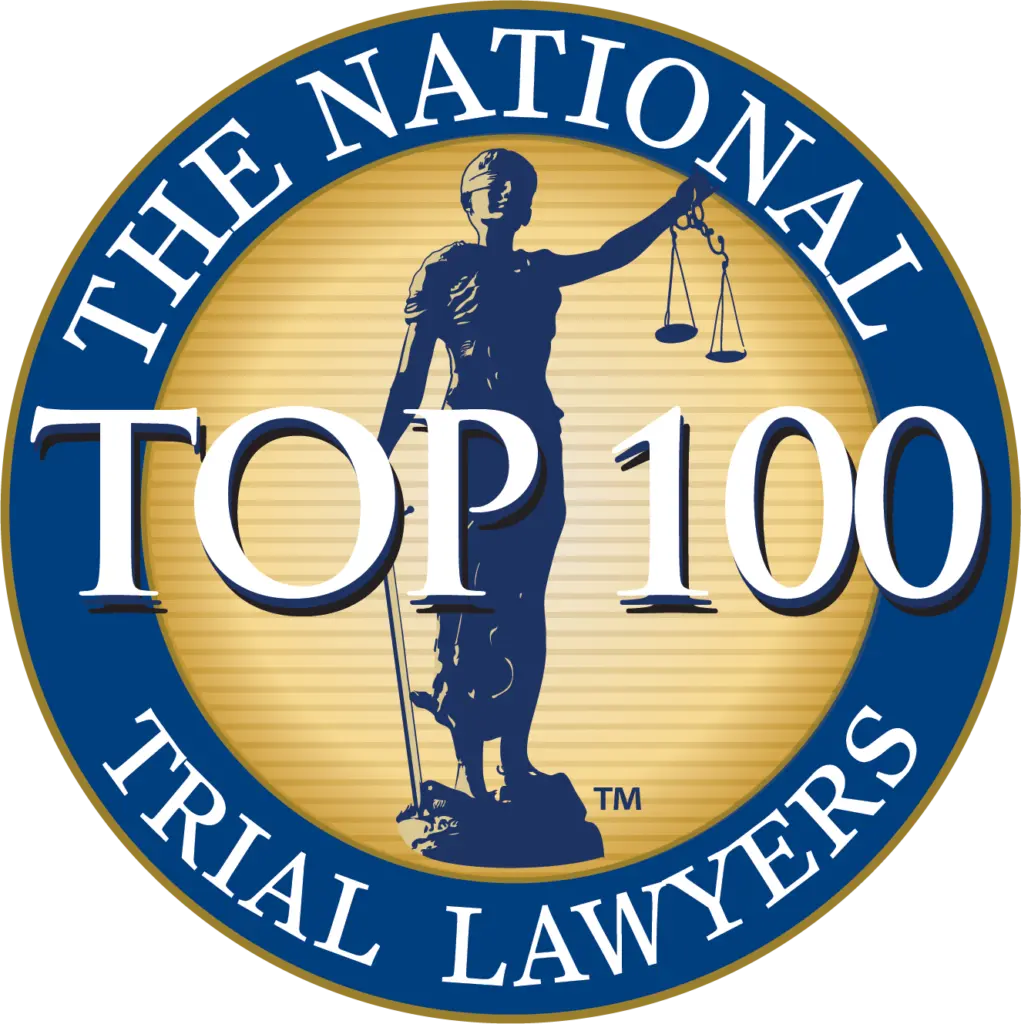
Member of the Colorado Bar Association since 2014. Attorney, Christopher M. Nicolaysen focuses primarily on helping those injured in Colorado car accidents, other auto accidents, and Colorado personal injury incidents.
This article has been written and reviewed for legal accuracy and clarity by the team of writers and attorneys at Springs Law Group and is as accurate as possible. This content should not be taken as legal advice from an attorney. If you would like to learn more about our owner and experienced Colorado personal injury lawyer, Christopher Nicolaysen, you can do so here.
Springs Law Group does everything possible to make sure the information in this article is up to date and accurate. If you need specific legal advice about your case, contact us. This article should not be taken as advice from an attorney.
The first question everyone asks after an automobile accident is, “Who is to blame for this?”
It is a natural reaction after such a traumatic experience to try to understand how it could have happened.
It is also natural to worry about who is responsible for paying for the damage to one’s vehicle and medical expenses, lost wages, and other damages when someone is injured.
A Colorado Springs comparative negligence lawyer can help answer these questions and determine responsibility.

Accident investigators will search for evidence to determine the cause of the crash.
Maybe one driver was speeding; maybe one or more drivers were under the influence of drugs or alcohol; maybe a driver was distracted by his cell phone.
What happens when more than one person is at fault?
Our attorneys at Springs Law Group in Colorado Springs can help you get the answers you need.
We’ll help you determine liability in your claim and fight for your right to compensation.
Call us today to discuss your case.
Comparative negligence is a legal concept used to assign fault in personal injury cases in Colorado.
There are two types of comparative negligence: pure comparative negligence and modified comparative negligence.
The pure comparative negligence rule is a system where a plaintiff can recover damages even if found to be mostly at fault for the accident.
The damages are reduced by the plaintiff’s percentage of fault.
Modified comparative negligence, on the other hand, limits a plaintiff’s ability to recover damages if they are partially at fault for the accident.
The modified comparative negligence rule in Colorado is known as the “50% rule.”
A plaintiff can only recover damages if their percentage of fault is less than 50%.
If the plaintiff’s percentage of fault is greater, they are barred from recovering damages.
Contributory and comparative negligence are two legal terms used to describe situations where multiple parties are at fault for an accident.
However, there are significant differences between the two concepts.
In states that follow the contributory negligence rule, if an injured person is found to be partially responsible for an accident, they may not recover any damages.
For example:
In contrast, in a comparative negligence state, the actions of both parties are examined, and a judge or jury determines the relative fault of each.
If an injured party is found to be partially at fault in a car accident, they may still recover damages, but the jury may reduce the amount.
Colorado’s modified comparative negligence statute provides that a person may recover damages in proportion to the degree of the plaintiff’s negligence and the defendant’s.
The judge or jury is instructed first to determine the number of damages that would be awarded if there were no negligence on the part of the injured party.
Then, the judge or jury must determine the relative fault of each party.
The amount awarded is the total amount minus an amount equal to the degree of fault assigned to the injured party.
If it is found that the injured party’s fault is more than 50%, they will receive nothing, the rationale being that a person should not be able to recover damages if he was mostly responsible for his own injuries.
If there is more than one defendant in an accident case, the 50% rule still applies, but the relative negligence of the injured party is measured against all of the defendants, not each individually.
For example:
Sometimes, defendants in accident injury cases will argue that some other person, not one of the parties to the lawsuit, bore some of the responsibility for the accident.
If the defendant can establish that a non-party was partially at fault, their liability may be reduced.
Accident cases involving multiple defendants, and those in which comparative negligence is an issue, are complex and require attorneys willing and able to go to court when needed.
At Springs Law Group, we try to settle each case if possible, but when we cannot reach a fair settlement, we are fearless in taking on even the most complex case.
The doctrine of “last clear chance” is another means of assigning fault in an accident.
If the injured person was partially at fault, but the defendant still had a chance to avoid the accident, the injured person may still recover.
Insurance companies are always looking for ways to minimize the amounts they must pay, and trying to assign blame to the injured person is one way they may use to do that.
Whenever there is any question of who was at fault for an accident, it is important to talk to a comparative negligence attorney in Colorado Springs immediately.
If you inadvertently say something that might be interpreted as a partial admission of fault, your right to recover for your injuries may be reduced.
Even something as innocuous as “I should have seen him coming” might be used by an insurance company to assign part of the blame to you, ultimately reducing the amount you might collect.
Proving negligence is a critical element of a personal injury case.
To win your case, you must demonstrate that the other party was negligent and that their negligence caused your injuries.
Here are four key elements to consider when trying to prove negligence in a personal injury case:
Proving negligence in a personal injury case can be complex, and working with an experienced personal injury attorney who can guide you through the process is important.
A skilled attorney can help you gather evidence, build a strong case, and fight for the compensation you deserve.
Contact a personal injury attorney at Springs Law Group today to learn more.
Are you facing a legal situation where you may be partially at fault for an accident?
Don’t make the costly mistake of assuming you have no recourse.
The Colorado Springs comparative negligence lawyers at Springs Law Group can help you understand your options and fight for the compensation you deserve.
With years of experience representing clients in Colorado Springs and beyond, our team has the knowledge and expertise to navigate the complexities of comparative negligence cases.
We understand the nuances of state laws and can work tirelessly to build a strong case on your behalf.
Don’t let comparative negligence laws in Colorado Springs reduce your compensation.
Trust the skilled attorneys at Springs Law Group to fight for your rights and future.
Contact us today to learn more.
What is the 50 percent rule of comparative negligence?
The 50 percent rule of comparative negligence states that a plaintiff cannot recover damages if they are found to be 50% or more at fault for the accident.
This rule is followed in many states, including Colorado.
Who has the burden of proof in comparative negligence?
In a comparative negligence case, the burden of proof falls on the plaintiff.
The plaintiff must demonstrate that the defendant was negligent and that this negligence caused their injuries.
How do you calculate comparative negligence?
To calculate comparative negligence, the court will determine the percentage of fault for each party involved in the accident.
This is typically done by looking at the actions of each party leading up to the accident.

Partner
Attorney, Christopher M. Nicolaysen focuses primarily on helping those injured in car accidents due to no fault of their own.
The personal injury matters include auto accidents, bicycle accidents, pedestrian accidents, and trucking accidents.
Chris truly enjoys helping clients through a difficult time and helping them get the compensation they deserve.
We use reviews to help show more people like you why we do what we do!

I was uneasy about reaching out to a law firm after being in an accident that left me injured and my vehicle totaled. I don’t care for the idea of suing for what was very clearly an accident. However, after learning more about the overall process of working with a professional team to navigate the murky waters of the insurance world, I was pleasantly surprised to find that the experience wasn’t as gross as I’d originally felt about it.

Springs Law is very friendly and professional. I always felt that they were on my side and cared about my injury and what I was going through. I highly recommend them.

Springs Law Group is an amazing group to work with! I got into a rough accident, and they never ceased to let me know they were there working hard to help me in my hour of need. It was always very easy to reach out to someone if I had any questions, and they were always happy to answer any questions I had.

I never have a problem with getting a response when I need them – which is not the case with most other firms. They really truly care about each client. As a plus, they always have positive attitudes, which matters tremendously when you are in a stressful legal situation.

Big thanks to Mr. Jake Kimbell and his team for their assistance with my case. He helped me through an incredibly challenging part of my life, and most importantly helped navigate through the convoluted legal channels of my case. I cannot thank him and his team enough for their support.

The entire team at Springs Law group has been nothing but amazing. Jake and the rest of the staff were great to work with and extremely professional. They were very attentive and answered any questions and concerns I had. I was always able to contact them and they were very responsive and communicated with me.

Springs Law Group is an amazing group to work with! I got into a rough accident, and they never ceased to let me know they were there working hard to help me in my hour of need. It was always very easy to reach out to someone if I had any questions, and they were always happy to answer any questions I had.





